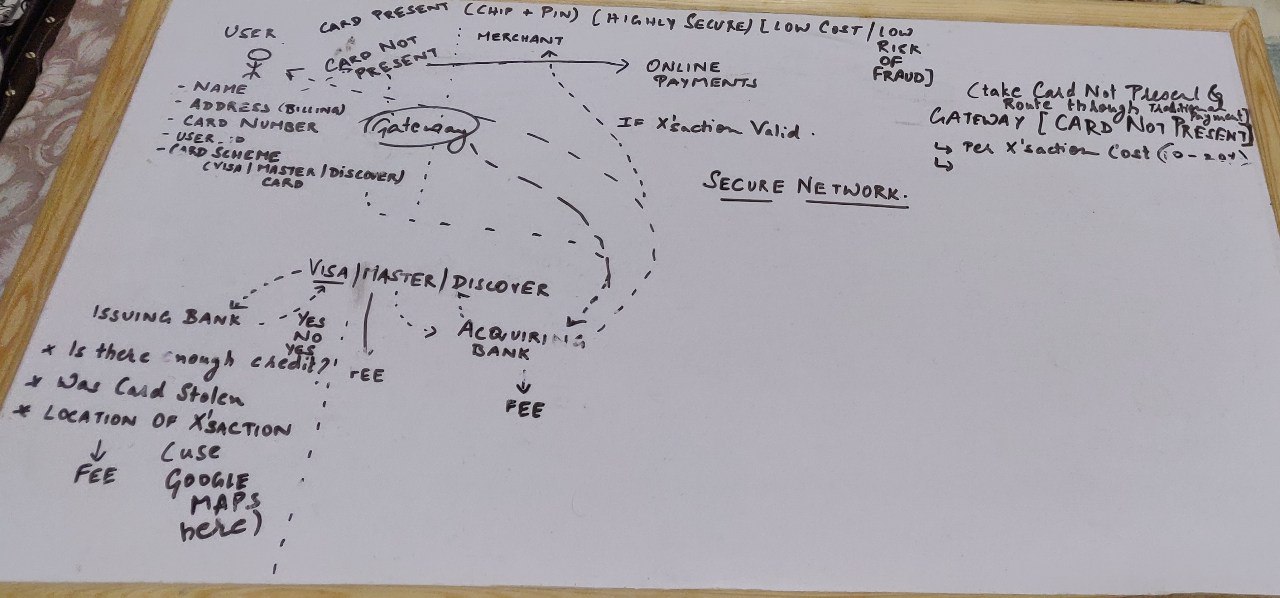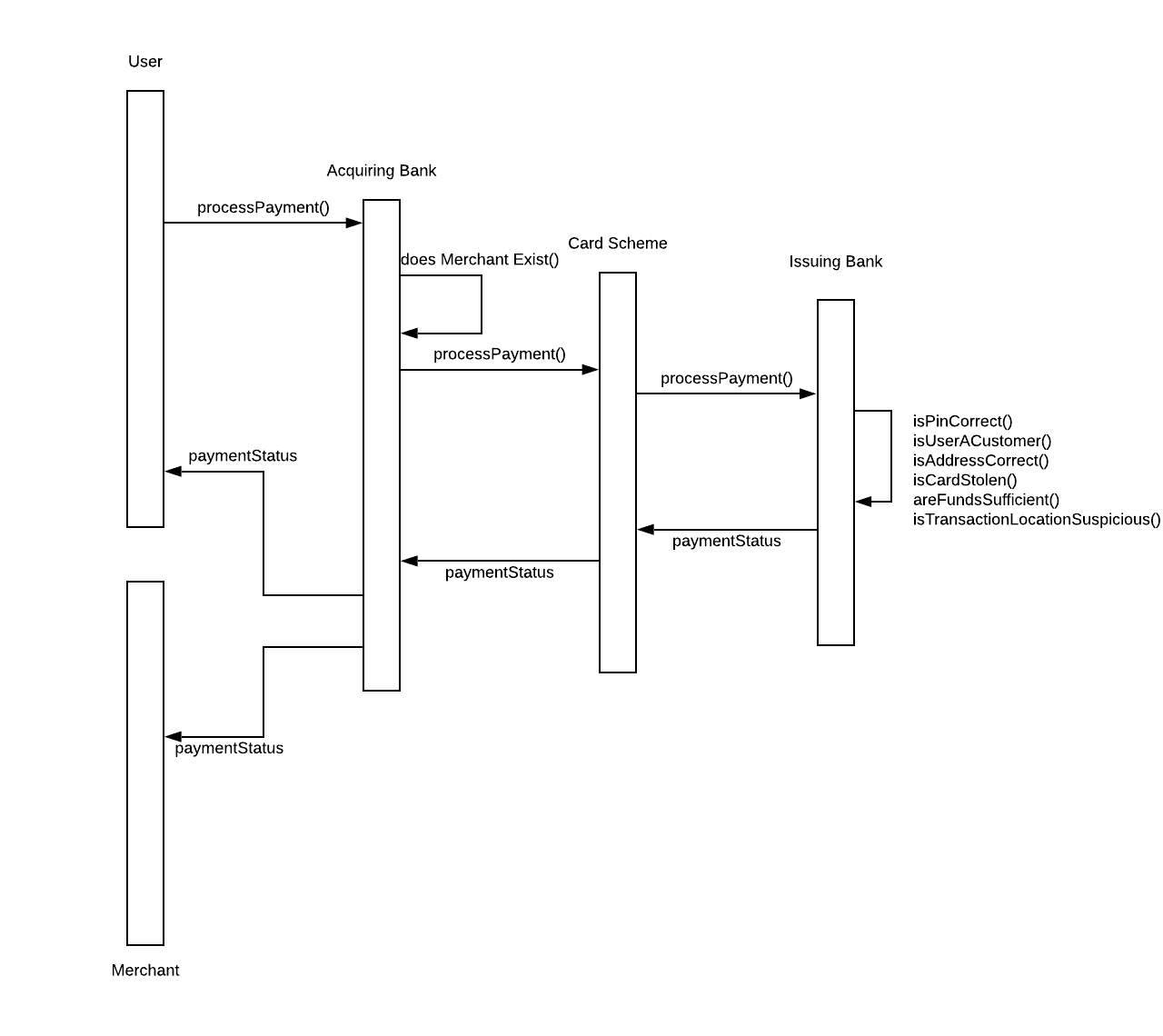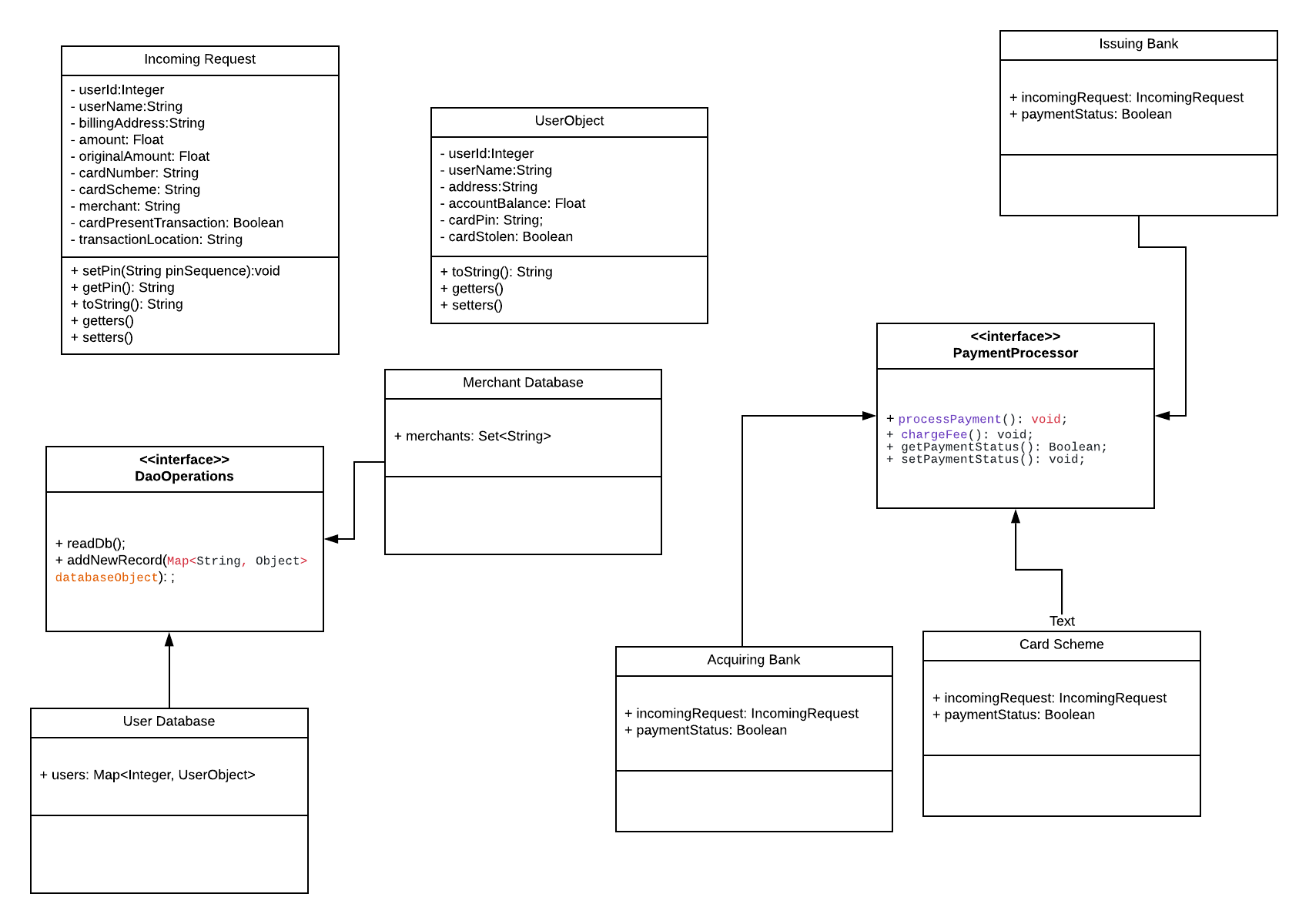Online Processing Payment Application
- Author : Vishal Seshagiri
Implementation Story
- Online Payment Systems is something I was completely oblivious off before this project and researching through scores of sources of information eventually got me this video.
- The rough system design whiteboard after grasping the contents looked something like this
:dizzy_face:
- Here's a run down of the steps performed by this application:
- The User initiates a request by passing in their name, address, amount, type of transaction, card scheme (Visa, Mastercard, Discover) etc.
- The request is passed to the acquiring bank which holds the merchant's account. The acquiring bank checks if the merchant exists and then passes the request to the Card Scheme.
- The Card Scheme is considered a blackbox for the purpose of this project and merely routes the data to the Issuing bank which holds the user's accounts.
- The Issuing bank then runs a series of checks on the user. On verification that the transaction is feasible a success acknowledgement is backpropagated through the network to the user and the merchant. A service fee is charged at each of the payment processors.
- The isCardPresent boolean is a very domain specific information for Online Payment Systems. It has nothing to do with the presence or absence of the card. If isCardIsPresent is true in the Payments world it is a chip and pin transaction while if it is false it indicates an online transaction like ones we do at ecommerce websites where we basically enter card information and that's that.
UML Sequence Diagram
UML Class Diagram
Goal
- My code is broken down into 4 main directories
- Data Access Object files which basically consist of UserDatabase.java and MerchantDatabase.java
- Payment Procedure Data Transfer Operations which are IncomingRequest.java and UserObject.java.
- Payment Processor files which are AcquiringBank.java, CardScheme.java and IssuingBank.java.
- Payment Runner file which is PaymentApplication.java.
- I have used the Factory Design Pattern for this project which is evident from the ample usage of interfaces and objects.
- There are two basic interfaces in the project which are DaoOperations and PayProcessor
- Whenever possible class variables have been limited to private access modifiers to ensure security in the application and getters and setters are used to facilitate accessibilty.
- Custom Exceptions are thrown to validate the data and caught in the application runner. A static final class ErrorHandler.java has been created to store the exception enumerations.
- Console based logging has been achieved using the log42j library.
Improvements
- As a part of further improvements geospatial features of the transaction can be tracked to ensure prevention of fraudalent transactions. This can done by using the goolemaps java api and querying the distance between transaction location and user's billing address. A simple heuristic can then be employed to either validate or invalidate the transaction.
- UserIDs could be generated randomly and passwords can be hashed using a hash function like md5 before storing to the database.
- Concurrency can be ensured by making the class methods synchronized and spawning threads to pass multiple incomingRequests to the api. This will ensure that the methods are thread safe and concurrent in their execution.
Testing
- 9 test cases have been implemented to ensure correctness of code.
- They simulate the following conditions:
- Successful isCardPresent Transaction
- Successful isCardNotPresent Transaction
- Condition where CustomerDoesNotExist Exception is thrown
- Condition where CardNotPresent Exception is thrown
- Condition where IncorrectPin Exception is thrown
- Condition where AddressMismatch Exception is thrown
- Condition where StolenCard Exception is thrown
- Condition where InsufficientFunds Exception is thrown
- The exceptions listed above are in a logical ordered hierarchy.
Acknowledgements:
- Glassdoor - for boilerplate code.
- Dennis Jones - for the awesome YouTube video.

